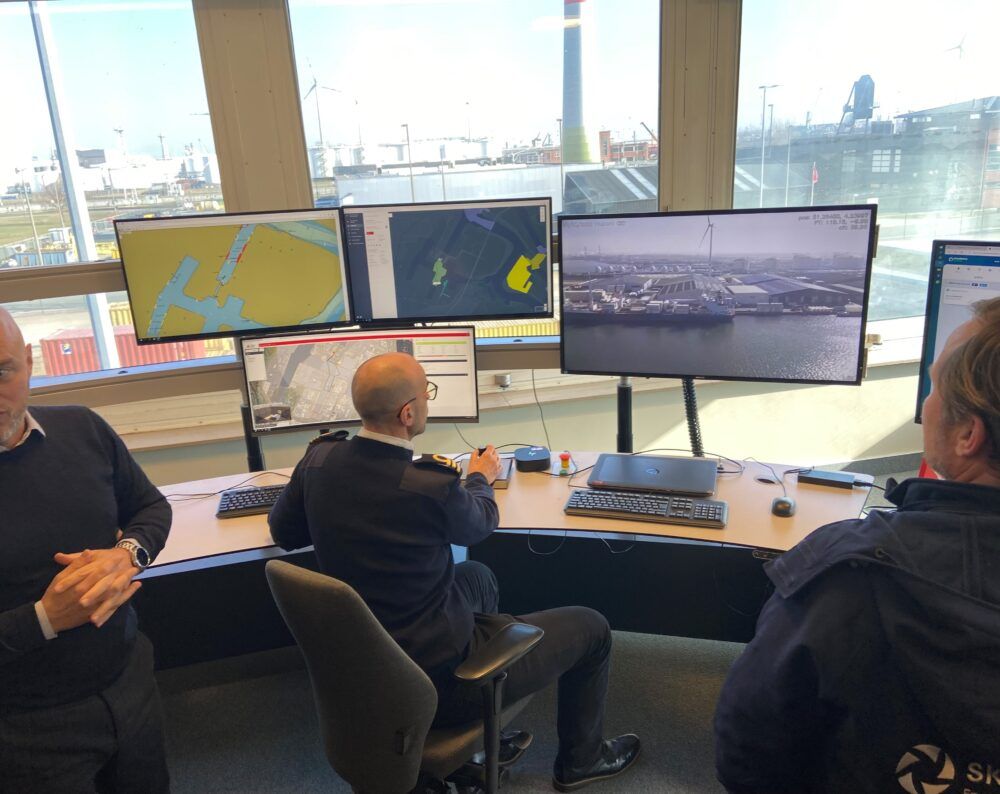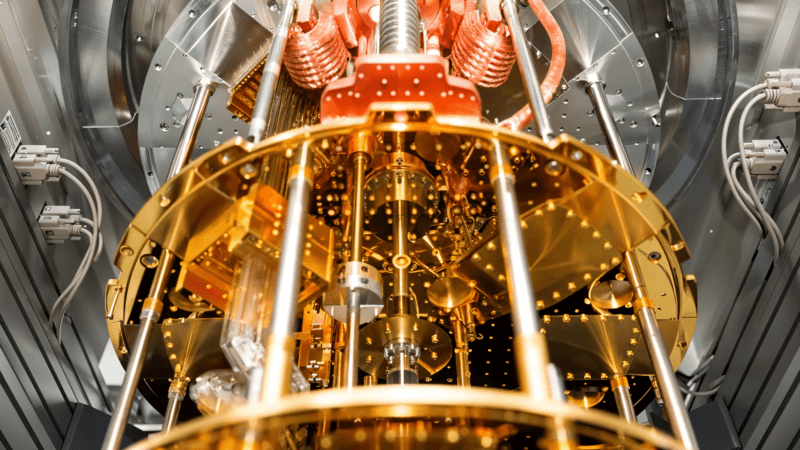 Drones are agile in obtaining data and can also reduce costs (Control room of the Port of Antwerp-Bruges / Lennart Verstappen).
Drones are agile in obtaining data and can also reduce costs (Control room of the Port of Antwerp-Bruges / Lennart Verstappen).
The arrival of drones in ports: safety, immediacy and efficiency
Drones are one of the great novelties in terms of sustainability and innovation, but they are putting all ports to the test because of the speed with which they have arrived. We analyse the current scenario with drone experts from the Port of Hamburg and Barcelona, and review the main drone programmes in other leading ports.
 Drones are agile in obtaining data and can also reduce costs (Control room of the Port of Antwerp-Bruges / Lennart Verstappen).
Drones are agile in obtaining data and can also reduce costs (Control room of the Port of Antwerp-Bruges / Lennart Verstappen).
Efficiency for ports, protection for workers
Technology has the ability to turn previously unimaginable events into reality. Drones are one of those tools that exemplify progress. The port sector is not only not lagging behind in a breakthrough, but quite the opposite: in many cases it is leading the way.
However, these unmanned aircraft pose a challenge to the industry due to the speed with which they have been implemented. But experts agree that drones bring two key aspects to the day-to-day operation of the port sector: safety and efficiency.
"Drones offer immediacy to reach places that are sometimes difficult to reach by other means," says Xavi Valls, the Port of Barcelona's representative on the chainPort drone working group.
The Global Strategic Networks Officer of the Port of Hamburg, Íngrid Boqué, also explained this to PierNext: "We use drones in different scenarios, one of them is to carry out the maintenance of large bridges, thus minimizing the risk to workers. These drones move around the bridge capturing images of the areas that could be damaged, either due to deterioration from years of construction or other reasons."
For Boqué, moreover, the workers are an extremely important point, not only because these aircraft provide them with more safety, but also because of the need to educate them using new technologies.
However, beyond immediacy and security, there are other key elements to understand the success of drones in ports. "It is not only the agility to obtain information, but also the lower costs. The combination of these two factors makes the drone a very good option for obtaining data," explains Valls.
Bearing in mind that drones provide protection for workers and efficiency when checking certain dangerous areas, in the long term their use should not only be associated with specific planning.
The Port of Hamburg is currently leading the way, together with the ports of Rotterdam and Antwerp-Bruges, in the use of drones in port areas. "Antwerp and Rotterdam are at a much more advanced stage than other ports and are flying on the fly. The drone allows them to obtain data instantly and to have it in streaming," says Xavi Valls, of the Port of Barcelona.
In the Port of Rotterdam, they have recently received authorisation to test the drone which is controlled from the Command and Control Centre of the Port Coordination Centre of the Harbour Master Division.
The Port of Rotterdam Authority wants to implement a multidisciplinary drone network throughout the port, which will be controlled from a central hub. This will allow a real-time connection between the live drone images and the evaluation of the Harbour Master Division. The drone network will also be used for incident prevention by the Joint Fire Brigade.
At the Port of Antwerp-Bruges they have pioneered the world by launching a network of drones, flying daily, providing "live information" on port activities.
Six autonomous drones, forming the "D-Hive drone-in-a-box" network, will provide additional pairs of eyes to help coordinate smooth, safe and sustainable operations in a complex environment.
The port uses drones for a variety of functions, such as quay management, surveillance, infrastructure inspections, detection of spills and floating debris, and to support security teams during incidents. The 18 daily BVLOS (Beyond Visual Line of Sight) drone flights are remotely controlled from a Command and Control Centre located in the heart of the port.
As Jacques Vandermeiren, CEO of the Port of Antwerp-Bruges explains, "Given the huge surface area of the port, drones give us an advantage in carrying out our core tasks as a port authority. This drone network will play a crucial role in the further deployment of the port's digital twin, a digital copy based on thousands of data from a network of cameras, sensors and drones, providing a real-time picture of what is happening in the port every second. With this we take an important step forward in the development of a fully digital nervous system that will help us manage our port more efficiently and make traffic even safer and smoother."
In other ports in the world, such as Portland (USA), drone operations for mapping Geographic Information Systems are already standardised and widespread.
The importance of collaboration, also with drones
The speed with which drones have arrived in the port sector has forced agents to be vigilant about the use of these aircraft. "In the end, the drone is just another form of transport. What you have to do is mount the devices that allow you to capture the data. The most important thing is to get the data and manage it well in order to transform it into analytics, end products, etc.", says Xavi Valls, from the Port of Barcelona.
However, as in every aspect of sustainability and innovation, the key is the same: collaboration. "In some aspects we do compete, but in the areas of innovation, digitalisation and cybersecurity we collaborate," contextualises Boqué, from the Port of Hamburg, who points out, for example, the chainPORT drone working group.
Originally initiated by the Port of Hamburg and the Port of Los Angeles, chainPORT is a transnational partnership between the world's leading ports. In addition to the two cities mentioned above, the port also incorporates Montréal, Panama, Tangier, Gothenburg, Rotterdam, Antwerp, Barcelona, Felixstowe, Singapore, Shanghai, Shenzhen, Indonesia and Busan.
"We work on different aspects. We look at what are the different trends in the innovation sector and from there we take the lead on these issues. In the end we are a small group. We believe that by being world leading ports and a small group, we can move forward in a more efficient and much faster way," develops the Global Strategic Networks Officer of the Port of Hamburg.
Boqué points out that the Port of Antwerp is currently one of the benchmarks in the use of drones. Today, the Belgian port not only uses them to carry out inspections, but also to manage berths or the detection of drifting oil spills. Collaboration in this area has only come about relatively recently, but the most important thing is that the steps taken in the past are now being pooled.
The challenge of being on the same page
Currently, the ports of Antwerp-Bruges, Rotterdam and Hamburg are leading the way when it comes to the use and management of drones in port areas.
Collaboration through initiatives such as chainPORT enables the different actors to be up to date and to exchange information easily. The efficiency and safety offered by aircraft are two aspects that generate communion between institutions. However, they are not only aligned with the benefits that aircraft bring, but also with the challenges they imply.
Regulations are one of the big barriers that ports have to overcome in order to keep up with the use of drones. These aircraft have arrived so quickly in the sector that they are forcing professionals to work at high speed. Communication is therefore extremely important for Boqué: "We talked a lot about what implementation entails, from whom approval is needed for a drone to take off, what processes need to be followed and how it works at each site".
Boqué's vision complements that of Valls. "We have to make public bodies see that drone use is useful," says the Port of Barcelona representative on the chainPort drone working group. The Port of Barcelona can operate drone flights, but it is one of those that needs 15 days' notice to manoeuvre, he gives as an example.
For Valls, the key is to understand that the return on drones is not only reduced to the economic aspect: "Often they don't have great monetary returns, but in the long run they do. Surveillances don't give you money but they do offer you security. Neither does environmental monitoring, but it is something basic for our future. That is why Valls hopes one day to have a network of drones communicating with each other from a control room.
Because in the end, the challenges posed by unmanned aircraft are not frightening, quite the contrary: they are stimulating for the future.






